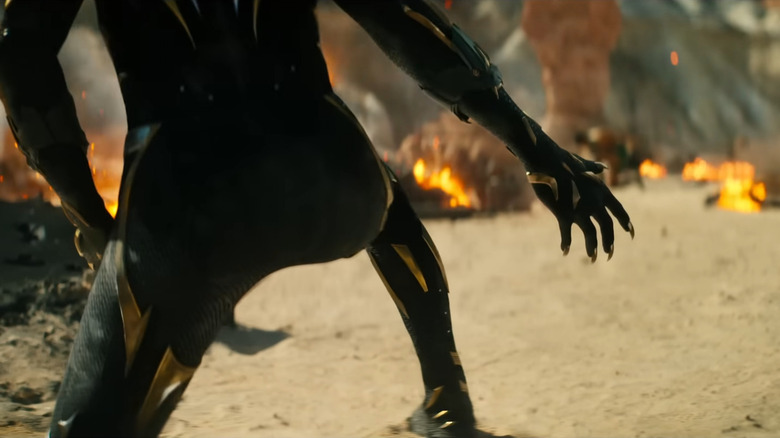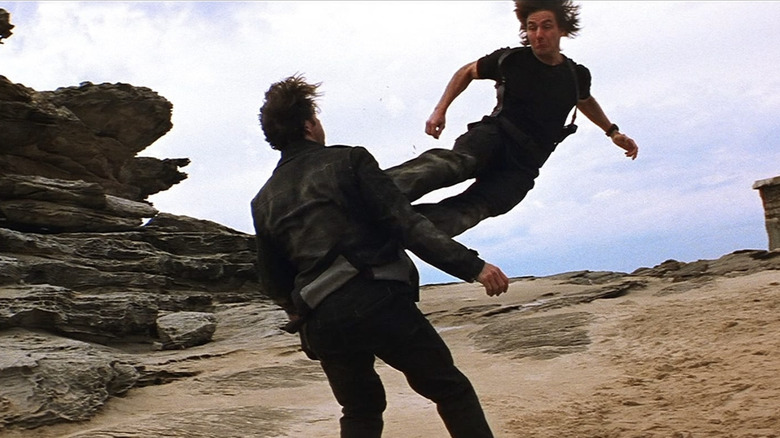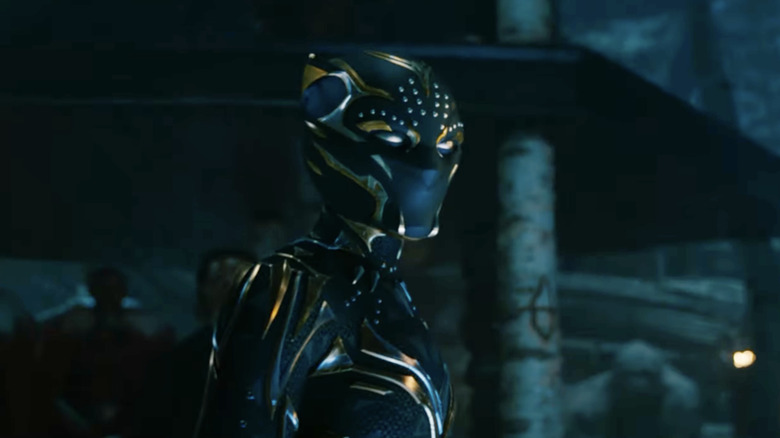Black Panther: Wakanda Forever's Climactic Battle Reminded Me Of Mission: Impossible 2, And I'm Not Mad About It
"Black Panther: Wakanda Forever" is bigger and more ambitious than the 2018 film that came before it. Ryan Coogler clearly wanted this sequel to serve as a touching tribute to Chadwick Boseman and be a grandiose follow-up with a larger-scale conflict and even more significant action. The underwater nation of Talokan is the antagonist of "Wakanda Forever," making the film feel like a clash of two nations. With all of the unique abilities of the warriors of Talokan, the sequel features plenty of inspired action involving orcas, siren singing, and intense spear-fighting.
A highlight of the film's action is featured in the third act, which sees the new Black Panther take on Namor in a one-on-one fight on a desert beach. Aside from having intense and entertaining choreography, the final battle is strikingly similar to another film, "Mission: Impossible 2," directed by John Woo and featuring music by Limp Bizkit. This comparison is by no means an insult to either film but rather a keen observation made by the editorial team at /Film that I am more than happy to expound upon. Everything from the setting of the fight to the brutal choreography, the climatic battle of "Wakanda Forever" is eerily reminiscent of the Tom Cruise-led film.
Fights with similar tension and urgency
"Wakanda Forever" and its final fight between Black Panther and Namor feels like a step up from the first film. 2018's "Black Panther" has all the emotional stakes necessary for the fight to be meaningful, but the CGI slugfest that was Black Panther versus Killmonger in the vibranium mines made it hard to feel real. The tangible space of the beach in which the climatic fight of "Wakanda Forever" takes place allows it to be a bit more grounded. Coincidentally, Ethan Hunt's final fight in "Mission Impossible 2" is also on a beach, going up against rogue agent Sean Ambrose (Dougray Scott).
While there is way more slow-motion in the "M: I-2" fight, both feature the fighters delivering brutal blows to one another. Watching Namor spear Black Panther against a rock and seeing Panther return the favor with an exploding ship that gives Namor severe burns, there's a level of brutality to the fight that just works. Moreover, "Wakanda Forever's" war also has a sense of urgency to both characters fighting for the survival of their nation. Just like Ethan, time isn't on the Black Panther's side as the Wakandans are slowly overwhelmed by the Talokan warriors. Both fights not only have visceral choreography but a sense of urgency as well. Not only that, but director Ryan Coogler said that his inspiration when making "Wakanda Forever" were films reminiscent of (and released around the same time as) "Mission: Impossible 2."
Similarities in films made decades apart
When doing press for the movie, Ryan Coogler said he "would often talk about wanting this movie to feel like a '90s movie ... In terms of these big scope-y action pieces" that also have heart and meaning behind them. While "Mission Impossible 2" was released in 2000, the movie had undergone production in 1999, so it could still technically be considered part of the era of films from which Coogler drew inspiration. "Wakanda Forever" certainly shares similar ambitions to the films Coogler drew inspiration from, and the same could be said about Black Panther and Namor's final showdown.
It's always fun to pick out similarities between two films that seem wildly different on the surface. Released decades apart from each other, it's surprising to see so many similarities in the tone and structure of both films' third-act conflicts. However, it could be argued that the final fight of "Wakanda Forever" has more substantial emotional weight, while the "M: I-2" fight feels slightly more shallow. While "Wakanda Forever" may not have any music from Limp Bizkit, it's got beachfront fisticuffs that would make Ethan Hunt proud.


